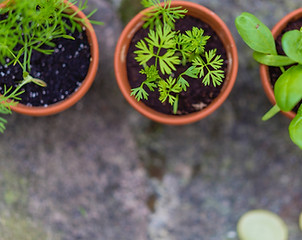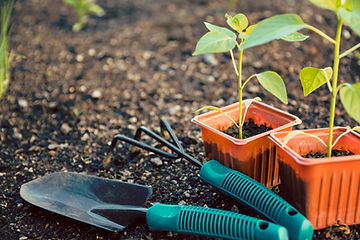#GrowTheHarvest




Limited access to fresh produce is a major problem within communities suffering from food insecurity. Low-income communities living in food deserts have limited access to fresh and healthy affordable food. Fresh produce is a vital source of nutrients that the body needs and Harvest Pack believes it should be within everyone's reach. That's why we've started our #GrowTheHarvest campaign.
At select future events, volunteers will receive seeds to grow tomato plants from home. Whether you want to grow them in your garden or indoors, we have instructions below on how to yield quality tomatoes. Our ultimate goal is to get these tomatoes donated to food shelves for people who need them the most.
Why Tomatoes?
Universal
Tomatoes are grown and eaten by people around the world. Cultures use tomatoes in many diverse ways, making them very useful.
Nutritious
Not only are these red cuties full of flavor, they offer quality nutrients. Vitamin K, Vitamin C, potassium, and folate are all found in tomatoes.
Amazing Growth
With proper care, tomato plants can be very high yielding. Their low-cost seeds can produce many pounds of tomatoes with just a little water, sun, and love.
Share Your Progress With Us!
Take pictures with your plants as they grow and share them with us on Facebook and Instagram. Post your pictures with the hashtag #growtheharvest so we can see the difference our supporters are making.
Donate To Your Local Food Shelf
Once your plant grows some ripe and ready-to-eat tomatoes, you're ready to donate them to a food shelf in your community.
How To Grow and Harvest Your Tomatoes
Hover over each section for directions.

Sowing
Start tomatoes indoors 6-8 weeks before the last frost of spring, sowing the seeds in a flat 1/4" deep and 1" apart. Keep the temperature at 70-75 degrees F until germination, as well as providing adequate light in a sunny window or under a grow light; keep the soil moist, but make sure drainage is adequate. When the second set of leaves emerges, transplant the seedlings into individual pots; bury the stems up to the lowest set of leaves to grow strongly rooted plants. A week before planting the seedlings outside, begin exposing them to the weather during the day to harden them; tomatoes cannot endure cold weather, and should not be transplanted outside until all threat of frost has passed. When the soil temperature reaches at least 70 degrees F, plant the seedlings in full sun and very rich soil; once more, bury the entire stem up to the lowest set of leaves. Space the plants 2' apart. For companion planting benefits, plant tomatoes with carrots or onions, but avoid planting them with cabbage or tomatoes.
Everwilde.com 2018

Growing
Since temperatures below 55 degrees F can damage production, protect the plants if temperatures drop. A thick layer of mulch helps conserve moisture and control weeds; water the plants once a week, but avoid getting the leaves wet. Determinate, or bush type tomatoes, do not require staking. New Yorker tomatoes resist verticulum wilt, alternaria stem canker, and late blight.
Everwilde.com 2018

Harvesting
Test the ripeness of tomatoes by pressing them gently; the flesh should yield slightly. The mature color also indicates ripeness. If the stem does not come easily off the vine, cut it with a scissors. Vine ripened tomatoes have the best flavor, but as soon as frost comes, all tomatoes should be harvested, even the green ones. Unripe tomatoes will ripen eventually if kept in a warm place out of direct sunlight. New Yorker tomatoes ripen very early and perform well for preserving or making sauce.
Everwilde.com 2018

Seed Saving
Since cross pollination between most tomato varieties is unlikely, isolation is not a concern. Pick fully ripe tomatoes and cut them in half horizontally, across the middle; squeeze out the pulp into a container. An alternative method for smaller tomatoes is to put them in a blender and pulse the mixture. Since the seeds are hard and slippery, they will not be harmed. Let the mixture ferment for several days or until a thick layer of mold has formed; this process removes the gelatinous layer on the seeds. Pour off the mold and debris, saving the good seeds on the bottom. Rinse the seeds in a strainer under running water until they are clean, then spread them out to dry in a protected location away from direct sunlight. Stir them twice a day, and provide a fan to speed drying if the air is humid. Once the seeds are completely dry, store them in a cool, dry location for up to four years.
Everwilde.com 2018
Here are some easy tips for growing your plants indoors!
Get my good side.
al
5 - 10
Start by planting your seeds in a fresh seed-starting potting mixture.
Keep your plants on a window sill and as close to facing south as possible. This will ensure they get maximum amount of sun.
Give your plants an even amount of sun by rotating them every few hours when possible. This ensures all sides get a chance to be in the sun.
Make sure your plants grow in a large enough container. Five gallon to ten gallon containers are perfect for quality growth.
.jpg)